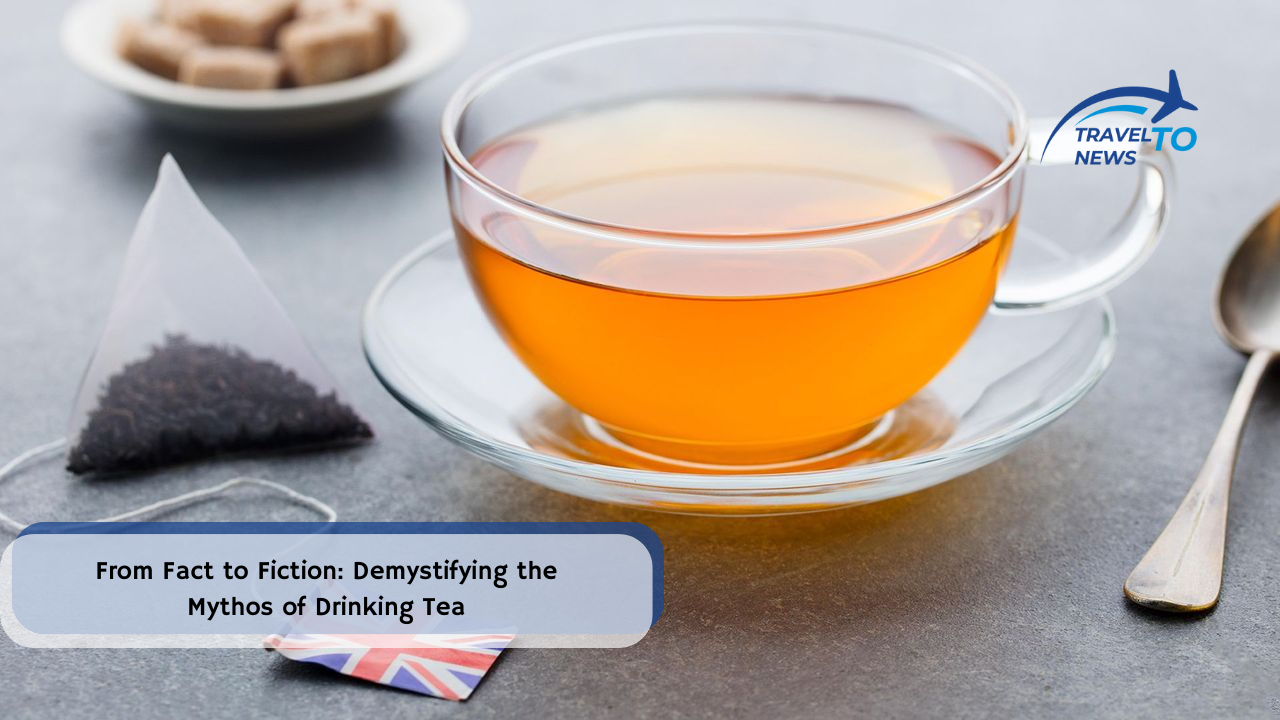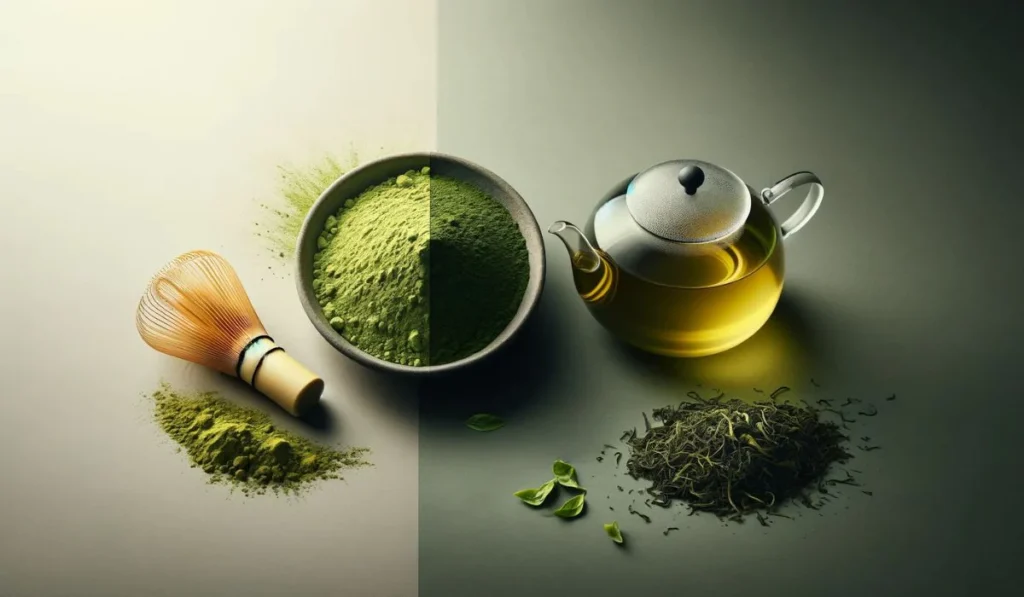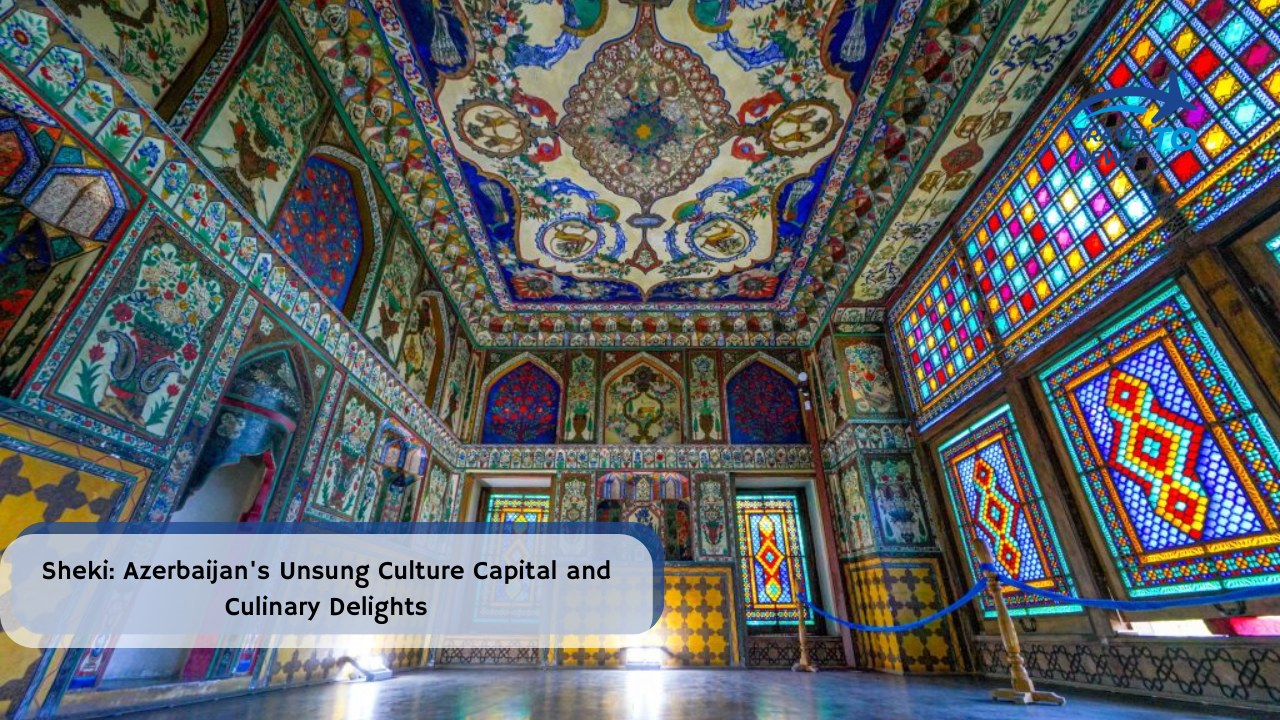From Fact to Fiction: Demystifying the Mythos of Drinking Tea

Journey with us as we decode the fascinating mythos of drinking tea. Discover the tales steeped in every cup, as we debunk myths and unearth the rich history and traditions linked to this cherished beverage.
Tea, the second most consumed beverage in the world, shares an intimate relationship with us. Over time, this humble brew has tantalized taste buds, fueled revolutions, and inspired poets. Yet, the journey of the tea leaf from a simple bush to the heart of cultural traditions is adorned with both facts and fables. Tea isn’t merely a brew, but a rich tapestry of cultural, historical, and even mystical threads that have come together over centuries. Let’s embark on a journey to separate fact from fiction and delve into the mythology and realities of our beloved cup of tea.
Table of Contents
Decoding Tradition: The Mythos of Tea in Different Cultures
Tea, a humble beverage, has flowed into the cultural veins of various societies and etched a place of reverence for itself. From the solemnity of Asian tea ceremonies to the charm of the British afternoon tea, let’s explore the myths and realities shrouding these tea traditions.
The British Tea Tradition: Myths and Realities
The British love affair with tea is no secret. Despite the beverage hailing from Asia, Britain has often come to mind when considering tea traditions. Let’s sift fact from fiction within the British love for the brew.
Myth 1: Afternoon Tea and High Tea are Interchangeable
Many people overseas often use these terms interchangeably, believing they refer to the same British tea tradition when in fact they represent entirely different social classes and times of day.
Reality Check: While both are quintessentially British, the Afternoon and High Tea differ vastly in their origins. Afternoon tea, as discussed in our previous blog post, was a mid-afternoon meal designed to keep the hunger at bay until the late dinner. High tea, in contrast, developed amongst the working class as a hearty meal, combining tea with more substantial treats like meats, cheeses, and pies.
Myth 2: Tea Should Always be Served with Milk
The notion that all tea, especially black tea, should be served with a splash of milk is another common notion tied to British tea culture.
Reality Check: While it’s a personal choice, not all teas work well with milk. Delicate teas can often be overpowered by the creaminess of milk. Ultimately, the decision to add milk should depend on the tea variety and personal preference.
Asian Tea Ceremonies: Lore and Interpretation
The tea cultures of Asia, birthplace of tea, are rich with history, symbolism, and ritual. The formality of tea ceremony traditions in China and Japan is a stark contrast to the British approach to tea-drinking.
Myth 1: All Asian Tea Ceremonies are the Same
Given the geographic proximity of China and Japan, one might assume that their tea ceremonies share significant similarities.
Reality Check: Though both cultural practices honor tea, their philosophies and execution differ remarkably. In Japan, the tea ceremony, or Chanoyu, is a meditative ritual with flexible rules while the Chinese tea ceremony, Gongfu, emphasizes the meticulous art of brewing and serving tea rather than the spiritual aspect.
Myth 2: Oolong Tea is Exclusive to Chinese Tea Ceremonies
Oolong tea is commonly associated with Chinese tea ceremonies, leading some to believe that it is the only choice for these events.
Reality Check: While Oolong tea is a popular choice for Gongfu due to the complex flavor profiles that can be uncovered during the brewing process, other tea types such as Pu-erh or Green teas are also used.
By exploring the tea cultures of Britain and Asia, we get a glimpse into the deep-rooted narratives of tea and its meaningful integration into society’s fabric. In debunking these myths, we hope to deepen your appreciation for this universally adored drink and enhance the experience of your next cup of tea.
Steeping Truth: Debunking Tea Myths with Science

In a world where legends swirl as easily as leaves in the wind, tea misconceptions can often be mistaken for truths. It’s time to clarify these tales and toast to the bona fide benefits and realities of tea, backed by science. Let’s pour over some common tea myths and steep ourselves in the facts.
Myth 1: More Steeping Time Equals Stronger Tea
The Tale: Longer steeping times make tea stronger and more beneficial, capturing all the essence and nutrients from the leaves.
The Reality: Over steeping tea can actually lead to a bitter and unpleasant taste. It’s not about how long you steep it, but how well. Different teas have optimal steeping times and temperatures that allow for the best flavor and nutritional quality. Research suggests that steeping for too long can increase the release of tannins, making the tea taste more astringent and potentially hindering the absorption of iron from your diet.
Myth 2: Herbal Teas are True Teas
The Tale: Any plant material steeped in hot water is considered tea.
The Reality: Scientifically speaking, true tea comes from the Camellia sinensis plant — all other “teas” are technically tisanes or herbal infusions. While “herbal teas” offer their own range of benefits and flavors, they are fundamentally different from traditional teas in terms of plant origin and sometimes the absence of caffeine.
Myth 3: Tea Hydrates as Well as Water
The Tale: Since tea is made with water, it’s just as hydrating as water alone.
The Reality: While tea is a hydrating drink, the caffeine content in regular tea acts as a diuretic, albeit mild, when consumed in large quantities. Water remains the best choice for hydration, but moderate tea consumption can contribute positively to your fluid intake.
Myth 4: White Tea Contains the Least Caffeine
The Tale: White tea, being the least processed tea, naturally consists of the least amount of caffeine.
The Reality: Caffeine content in tea can vary widely depending on multiple factors like the type of tea, the cut of the leaf, and the steeping method. While white tea is often believed to contain less caffeine because of its minimal processing, this isn’t always the case. Some white teas can have as much or more caffeine than green or black teas. Accurate caffeine content is best determined by professional testing rather than color or processing level.
Myth 5: Iced Tea Loses its Health Benefits
The Tale: Iced tea offers fewer health benefits compared to hot tea.
The Reality: The health benefits of tea come from its compounds such as polyphenols, flavonoids, and catechins, which remain present in both hot and cold versions. While the antioxidant levels might slightly differ due to varied preparation methods, the overall nutritional difference is relatively insignificant.
As we’ve seen, when we sift through these myths and study the tea leaves of fact, we find that the world of tea is just as enriching—scientifically speaking—as it is steeped in history and flavor. So the next time you indulge in a cup, remember that with tea, truth can be just as delightful as fiction.
Infusion of Imagination: The Impact of Tea Mythos on Popular Culture

Tea is not just a beverage; it’s a mosaic of stories, an elixir interwoven with culture and history. But what happens when the lines between tea’s mythos and its reality blur in the collective consciousness? This post delves into how tea myths have infused themselves into popular culture and examines their influence on society’s views on tea.
Drinking Tea: A Cultural Elixir
In popular culture, drinking tea often carries connotations of elegance, wellness, and sometimes, exotic mysticism. This portrayal is generously sprinkled with myths that have been brewing over centuries.
One of the most pervasive myths is that of tea as a panacea. This stems from tales of ancient herbalists and healers, often framed in an oriental context, who supposedly discovered the curative properties of tea. Movies, literature, and even marketing campaigns exploit this narrative, selling more than just a beverage—they sell an experience, a promise of health and serenity.
From Screen to Society: How Tea Myths Steep in Reality
The imagery of tea in movies and television series often reaffirms tea’s association with tranquility and reflection. Characters contemplating a pivotal moment in their lives are frequently depicted with a steaming cup of tea in hand—cementing the idea that drinking tea is a ritualistic act, fostering calm and clarity.
Marketing gurus have steeped their strategies in these myths, knowing well that these stories sell. They craft images of green tea as a key to longevity or black tea as a bastion of robust energy. Health blogs further propagate the mythos of tea, with articles about its supposed ability to cure anything from the common cold to chronic diseases, despite scientific evidence being more conditional.
Portrayal of Tea in Literature and Poetry
Tea has long been a favored motif in literature and poetry, where it often signifies more than just refreshment. It symbolizes comfort in the face of adversity, hospitality across cultures, and the warmth of human connection. Through these narratives, drinking tea has been romanticized and is sometimes seen as a metaphysical experience, connecting the drinker to a deeper heritage and a sense of belonging.
The Enduring Allure of Tea Mythos in Our Lives
The world’s fixation with tea and its cultural narratives is as steeped in myth as it is in reality. But perhaps the charm of these tea myths lies precisely in their blend of truth and fable. They serve as a bridge between cultural practices and individual experiences, adding a sprinkle of mystique to the daily act of drinking tea.
Despite these myths being just that—myths—the allure of tea’s story remains potent. Every sip comes laden with centuries of lore, every steaming pot an invitation to ponder, to connect, and to enjoy. In this light, myth becomes part of tea’s flavor profile, and whether these stories hold scientific weight or not, one cannot deny the comfort and community found in the shared mythology of drinking tea.
As our cups continue to brim with this storied infusión, the narrative of tea proves to be just as rejuvenating as the drink itself. The tea mythos, like the beverage, endures and adapts, ever-present in the cultural teapot of our lives.









